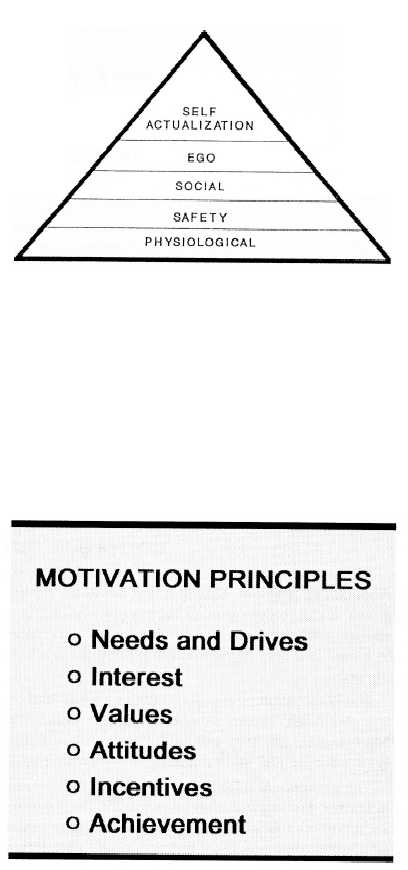| |
Applying Maslow’s theory in the
classroom may be limited by your
knowledge of the students or your
ability to meet their needs. Chapter
2 discussed various influences that
affect students in the training
environment. You need to be aware
of those influences and know the
resources available to help students
involved in conflicts that interfere
with their training.
That will
greatly increase your effectiveness in
motivating students to learn.
MOTIVATION
Figure 3-1.—Maslow’s hierarchy.
PRINCIPLES
The key principles to applying motivation theory in a training situation are summarized
below:
Needs and Drives. When students have a need or drive, they lack something. A need is
usually defined as a deficit or lack that causes a desire for satisfaction. The need to belong, for
instance, can motivate a student to seek group acceptance. That need, or drive, can cause the
student to behave in a manner that eventually reduces the need and results in satisfaction.
Interest.
Interest refers to a
person’s view of an activity as
worthwhile or enjoyable for its own
sake. An instructor who captures
students’ interest draws on their
internal motivation.
As
an
instructor, learn to control student
interest throughout the lesson; the
learning process breaks down once
a student loses interest.
To generate interest, state the
purpose
of
the
lesson
at
its
beginning. Emphasize why students
need to learn the material and how
they
w i l l b e n e f i t f r o m t he
information.
When students
understand the need to learn, they
are more likely to give their full
attention to your instruction.
16
|

